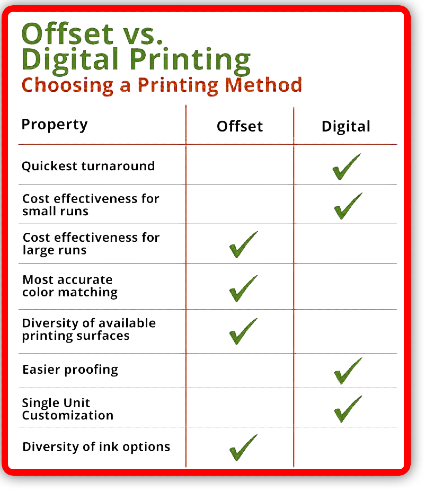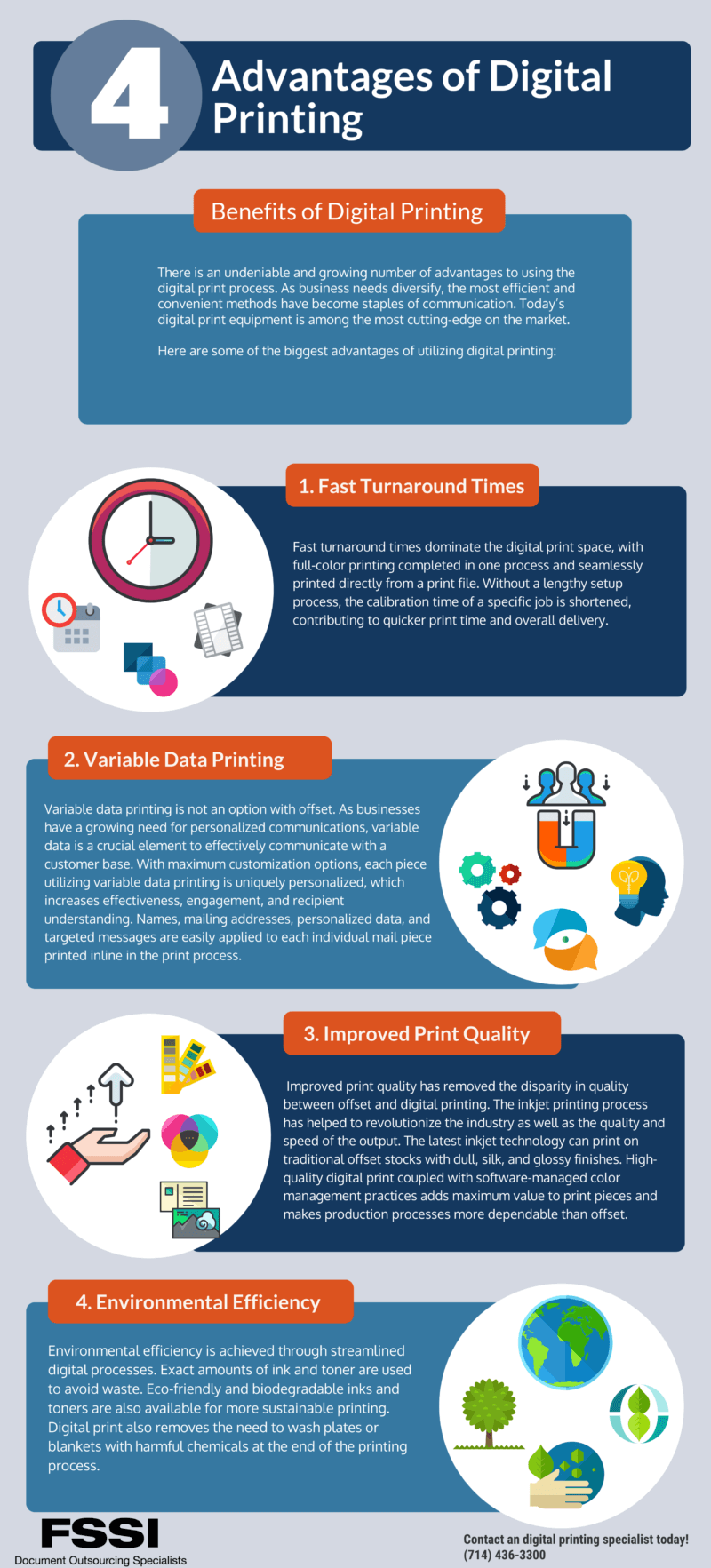The Ultimate Guide To Digital Printing
The Ultimate Guide To Digital Printing
Blog Article
Digital Printing - An Overview
Table of ContentsDigital Printing for BeginnersFacts About Digital Printing RevealedAbout Digital PrintingAbout Digital PrintingSome Known Questions About Digital Printing.Some Ideas on Digital Printing You Should Know
Variable information printing, such as direct mail with customized codes and addresses, is preferably matched for digital printing. Digital fast printing only requires 4 steps of design, review, printing and binding to get whatever done. Digital quick printing has an unmatched benefit: print on demand.According to PMMI, electronic printing allows brands and suppliers to respond quickly to customer demands while boosting the supply chain, decreasing warehousing price and waste, and appreciating faster time to market. That all audios fantastic, but just how does this innovation do all that? The major differentiator of these innovations is that there are no set-up charges and no plates with electronic printing.
The Only Guide for Digital Printing
According to Wikipedia, the biggest difference in between electronic printing and traditional approaches such as lithography, flexography, gravure, or letterpress - Digital Printing is that there is no demand to replace printing plates in digital printing, whereas in these analog printing methods the plates are consistently replaced. This leads to quicker turnaround time and reduces expense when using electronic printing.
Digital printing is highly versatile, so it's very easy to make changes to the bundle layout swiftly. It all goes back to the plates.
With standard printing methods, short-run printing is just not possible. Due to the fact that a fantastic style can make or damage your item, electronic printing consistently creates high-grade, clear and colorful graphics each time.
Digital printing is the process of printing digital-based images straight onto a variety of media substratums. There is no demand for a printing plate, unlike with balanced out printing. Digital data such as PDFs or desktop publishing files can be sent out straight to the electronic printing machine to publish theoretically, picture paper, canvas, fabric, synthetics, cardstock and various other substrates.
The Ultimate Guide To Digital Printing
According to PMMI, digital printing enables brand names and suppliers to respond promptly to client demands while boosting the supply chain, reducing warehousing price and waste, and delighting in faster time to market. That all noises wonderful, but exactly how does this innovation do all that? The significant differentiator of these technologies is that there are no set-up costs and no plates with digital printing.
According to Wikipedia, the greatest distinction between electronic printing and traditional techniques such as lithography, flexography, gravure, or letterpress is that there is no need to change printing plates in digital printing, whereas in these analog printing approaches the plates are repetitively replaced. This leads to quicker turn-around time and lowers expense when using electronic printing.

Digital Printing for Dummies
Extra inventory can imply more waste later on. With traditional printing approaches, short-run printing is simply not possible. Since a terrific style can make or break your visit their website item, electronic printing consistently creates high-grade, clear and vivid graphics each time. Digital printing on adaptable bags adds the bright, dynamic, and precise graphics that practically bid consumers to reach out and touch them.

According to PMMI, digital printing permits brand names and producers to respond promptly to client demands while enhancing the supply chain, minimizing warehousing cost and waste, and taking pleasure in faster time to market. That all audios great, however exactly how does this innovation do all that? The significant differentiator of these technologies is that there are no set up costs and no plates with digital printing.
Facts About Digital Printing Revealed
This results in quicker turnaround time and reduces expense when making use of digital printing.
Rapid production suggests obtaining your product to market faster. It likewise suggests it's much easier and faster to make adjustments in the future, when you change a recipe, add a SKU, or click resources develop seasonal packaging. Digital printing is very versatile, so it's easy to make changes to the bundle design quickly. All of it goes back to the plates.

See This Report on Digital Printing
Digital printing is the procedure of printing digital-based photos directly onto a variety of media substratums. There is no requirement for a printing plate, unlike with offset printing. Digital documents such as PDFs or desktop computer posting data can be sent out straight to the digital printing machine to print theoretically, photo paper, canvas, textile, synthetics, cardstock and various other substratums.
Report this page